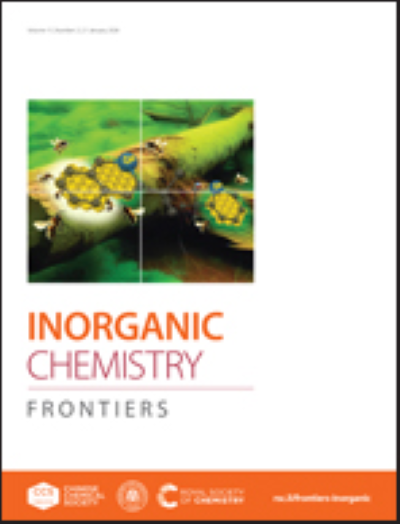Three-dimensional porphyrin-based covalent organic frameworks as bifunctional electrocatalysts for oxygen reduction and evolution reactions
IF 6.1
1区 化学
Q1 CHEMISTRY, INORGANIC & NUCLEAR
引用次数: 0
Abstract
The development of covalent organic frameworks (COFs) as bifunctional electrocatalysts for the oxygen reduction reaction (ORR) and oxygen evolution reaction (OER), coupled with precise control over their active sites, is critical for advancing fuel cells and metal-air batteries. In this work, we present a series of three-dimensional (3D) COFs constructed from two strategically designed metal-porphyrin monomers. Among these, SUZ-101-Co stands out due to its high density of well-defined Co-N4 active sites, making it an outstanding bifunctional electrocatalyst. SUZ-101-Co exhibits an overpotential of only 240 mV at 10 mA cm⁻² for OER and achieves a half-wave potential of 0.78 V for ORR, showcasing its superior catalytic performance. Comprehensive experimental analyses and theoretical simulations attribute this remarkable activity to the abundance and accessibility of Co-N4 sites. This study not only underscores the potential of 3D COFs in electrocatalysis but also introduces a novel approach for designing energy conversion materials.三维卟啉共价有机框架作为氧还原和进化反应的双功能电催化剂
开发共价有机框架(COFs)作为氧还原反应(ORR)和析氧反应(OER)的双功能电催化剂,并对其活性位点进行精确控制,对于推进燃料电池和金属-空气电池的发展至关重要。在这项工作中,我们提出了一系列由两种战略性设计的金属卟啉单体构建的三维(3D) COFs。其中,SUZ-101-Co因其高密度的Co-N4活性位点而脱颖而出,使其成为一种出色的双功能电催化剂。SUZ-101-Co在10 mA cm - 2时,OER的过电位仅为240 mV, ORR的半波电位为0.78 V,表现出优异的催化性能。综合实验分析和理论模拟将这种显著的活性归因于Co-N4位点的丰富和可及性。这项研究不仅强调了3D COFs在电催化方面的潜力,而且为设计能量转换材料提供了一种新的方法。
本文章由计算机程序翻译,如有差异,请以英文原文为准。
求助全文
约1分钟内获得全文
求助全文
来源期刊

Inorganic Chemistry Frontiers
CHEMISTRY, INORGANIC & NUCLEAR-
CiteScore
10.40
自引率
7.10%
发文量
587
审稿时长
1.2 months
期刊介绍:
The international, high quality journal for interdisciplinary research between inorganic chemistry and related subjects
 求助内容:
求助内容: 应助结果提醒方式:
应助结果提醒方式:


